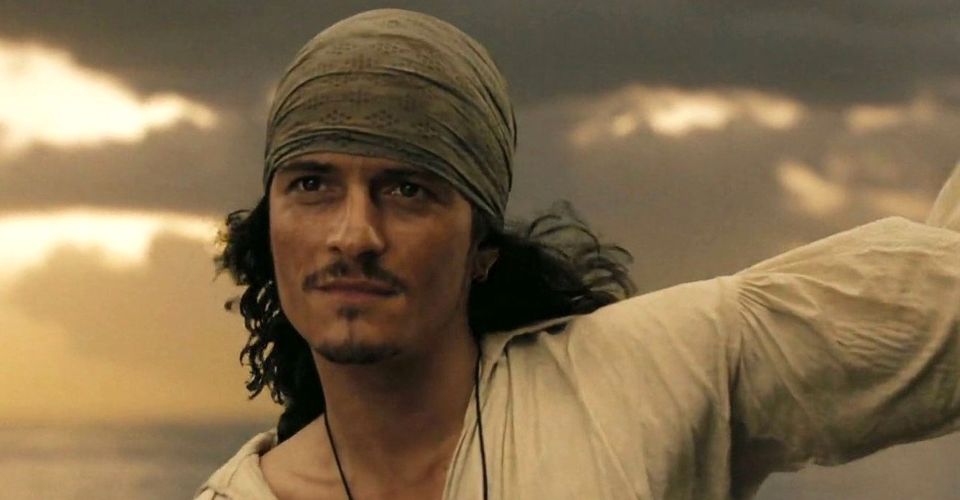POTC: Will’s Death Hides A Detail That Makes His Original Ending Perfect

Will Turner’s Pirates of the Caribbean fate was tragic, but there’s a hidden detail in his death scene that gives him the perfect original ending. Director Gore Verbinski finished his trilogy with 2007’s Pirates of the Caribbean: At World’s End. Although the film was criticized for its convoluted plot, the movie is still full of bold ideas and memorable set pieces, as well as small details that strengthen the franchise’s characters.
Orlando Bloom’s Will Turner began as a shy but impulsive blacksmith, hopelessly in love with Elizabeth Swann (Keira Knightley). Teaming up with Captain Jack Sparrow (Johnny Depp), Will learns to accept that sometimes the law needs to be broken. Over three Pirates of the Caribbean films, Will reluctantly comes to terms with his pirate legacy and is torn between his love for Elizabeth and freeing his cursed father from the franchise’s legendary Flying Dutchman.
Pirates of the Caribbean: At World’s End culminates in a fantastic final battle during a maelstrom. It’s striking and inventive but, most importantly, the focus is on themes of love and sacrifice. Despite the film’s flaws, its heart remains intact and the central trio receives a fitting end to their stories. However, Will’s death scene is made perfect by a specific detail that’s easy to miss – he is stabbed by the very same sword he made at the beginning of the first movie. This sword effectively represents Will’s journey and is a poignant reminder of its previous owner, acting as a tragic symbol of the trilogy’s love triangle.

Pirates of the Caribbean: The Curse of the Black Pearl introduces Will as he delivers a ceremonial sword to Governor Swann (Jonathan Pryce). The weapon is intended to be a gift for the newly appointed Commodore James Norrington (Jack Davenport). The sword notably reappears in the third film, returned to Norrington after he joins Cutler Beckett’s (Tom Hollander) ranks. Norrington ultimately finds redemption through saving Elizabeth from the Dutchman, sacrificing himself and stabbing Jones as a way of rebuking his offer to join his cursed crew. This is how Jones ends up with the weapon during the final battle, ironically killing Will with his own craftsmanship. It’s an admirably subtle moment. The sword is clearly visible in only two brief shots, whereas a lesser film would have gone to great lengths to overemphasize its symbolism. Instead, the scene’s emotions still take precedence, and the sword remains a small, but no less impactful, character detail.
Connecting Will and Elizabeth’s doomed romance with Davy Jones (Bill Nighy) and Calypso (Naomi Harris) was one of several surprisingly dark ideas in Verbinski’s trilogy. The sword builds on the story’s tragedy, representing how much Will has changed from the naïve blacksmith in the first film. From a man who supposedly despised pirates to becoming one himself, Will receives one of the strongest character arcs. Being killed by a symbol of his former identity is an incredibly fitting end to his story. The sword also ensures Norrington’s presence is felt in the third act, despite his death never being mentioned. Although the admiral redeemed himself, he still metaphorically tears Will and Elizabeth apart, alluding to the love rivalry that began in the original. The sword is also implicated in an act of revenge. Norrington was killed by Will’s father, Bootstrap Bill Turner (Stellan Skarsgård), and the pirate’s son subsequently dies by Norrington’s sword. It highlights the series’ amoral world, and Pirates of the Caribbean isn’t afraid to suggest all good deeds come at a price.
The first two Pirates of the Caribbean sequels had a notoriously rushed production, leading to many of the third movie’s problems. However, small but meaningful details like the sword help tie the trilogy together. Will didn’t remain dead, but this symbol in his death scene proves there was far more forward planning invested in these films than is generally assumed.
About The Author

















